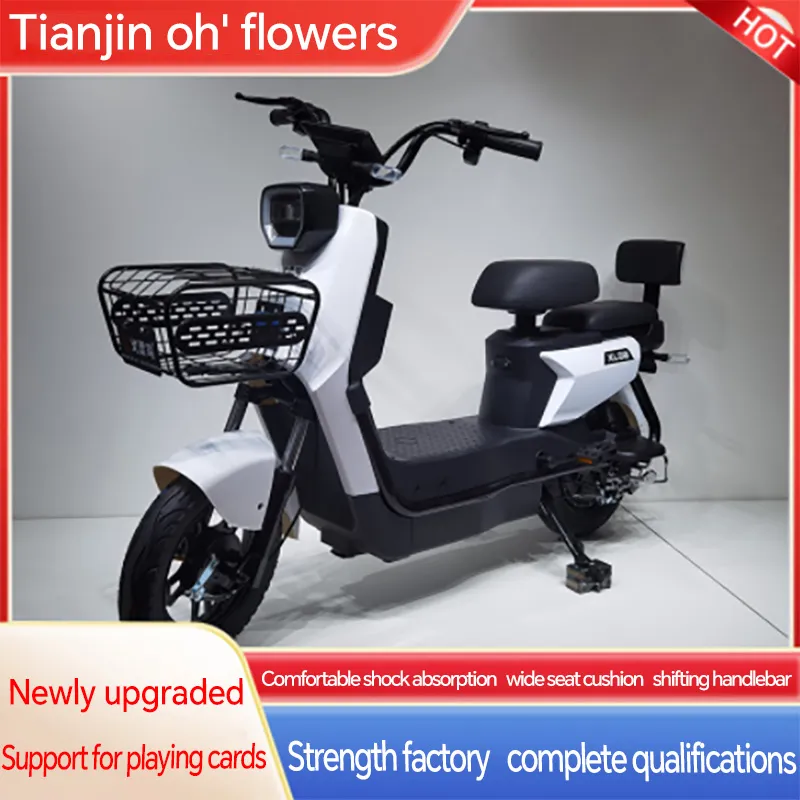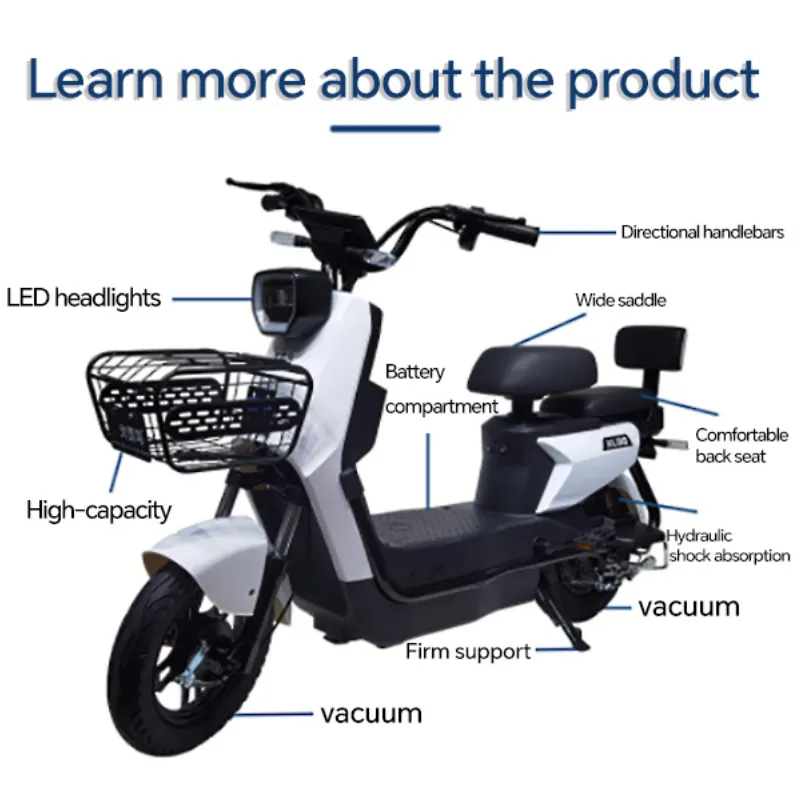Oct . 06, 2025 09:40 Back to list
ebike 24: Want fast, long-range, lightweight e-bikes?
Inside the fast lane of urban mobility: a field note on ebike 24
If you spend time around last‑mile fleets, you hear the same refrain: range, reliability, and easy servicing. That’s exactly where the New National Standard Electric Bicycle 48V20Ah (from China’s Yanlin) tries to plant its flag. People call it the ebike 24 in the warehouse, mostly because it runs 24/7 duty cycles without much drama. Bold claim? Maybe. But the parts list is solid: 48V20Ah lithium pack, controller with sane thermal management, and a compliant 25 km/h cap for street‑legal peace of mind in markets that follow the China GB rules.

Quick context: market trends and where this fits
Urban planners keep nudging toward micro‑mobility; delivery platforms need predictable OPEX; families want a low‑maintenance runabout for school runs. The ebike 24 aims at all three. To be honest, it’s not trying to be a boutique carbon cruiser. It’s a practical two‑wheeler that aligns with GB 17761‑2018 limits—meaning lighter, safer, pedal‑assist focused, and capped speed. In fact, that constraint is a feature for shared fleets and gated communities.
Specifications (field‑tested, real‑world minded)
| Parameter | Spec (≈) | Notes |
|---|---|---|
| Battery | 48V 20Ah Li‑ion | ≈960 Wh; 600–800 cycles in typical use |
| Motor (nominal) | ≈400 W hub | Aligned with GB 17761 limits |
| Top speed | 25 km/h (limited) | Regulatory compliance focus |
| Range | ≈60–90 km | Mixed mode, 70 kg rider, flat city loop |
| Brakes | V or disc (variant‑dependent) | Rear motor regen optional |
| Frame & load | Steel/alloy mix, ≈120 kg max load | Front basket + rear rack options |

Materials, build process, and testing
- Materials: 18650/21700 Li‑ion cells with nickel strips; controller uses MOSFETs rated for thermal headroom; IP‑oriented cable glands.
- Methods: spot‑welded battery arrays; conformal coating on PCBs; torque‑checked fasteners with threadlocker where needed.
- Testing standards: designed around GB 17761‑2018; export variants may target EN 15194 for EPACs and UL 2849 electrical system safety.
- Service life: battery ≈2–4 years (usage‑dependent); drivetrain service every 1,000–1,500 km is typical.
- Validation: bench thermal soak at 45°C; puddle splash (≈IPX4 intent); 500‑cycle partial‑depth charge test—capacity retention ≈84% (sample unit).

Where it shines (and why fleets keep calling)
Scenarios: weekday commuting, campus security loops, tourist rentals, grocery and takeaway delivery, and—surprisingly—elder care visits because the step‑through variant is easy to mount. Advantages include low energy cost per kilometer, simple charging, and parts availability. Many customers say the ebike 24 “just works,” which is the best compliment in this bracket.
Vendor comparison (buyer’s quick scan)
| Vendor | Battery | Cert focus | Warranty | Lead time | Notes |
|---|---|---|---|---|---|
| Yanlin (Origin, China) | 48V20Ah | GB 17761; EN/UL options on request | 12 mo bike / 6–12 mo battery (typ.) | 3–6 weeks | Factory customization available |
| Regional Reseller A | 48V15–20Ah | Local compliance docs | 12 mo | Stock‑dependent | Higher retail pricing |
| Boutique EU Brand B | 36–48V, 10–14Ah | EN 15194 emphasis | 24 mo (bike), 12 mo (battery) | 6–10 weeks | Premium finish, smaller packs |
Customization and field feedback
Options I’ve seen ordered: reinforced rear rack (40 kg), puncture‑resistant 20–26 inch tire choices, branded livery, throttle lockout for EPAC markets, and PAS tuning profiles (eco/normal/cargo). One delivery operator told me their ebike 24 units cut downtime by “around 18%” after switching from mixed legacy bikes—mostly due to consistent batteries and easier brake servicing.
Mini case study
Shenzhen micro‑fulfillment pilot: 100 bikes, 5 months. Average daily distance ≈38 km per unit; charge once per shift; brake pad swaps at ~1,200 km; no thermal cutbacks recorded in monsoon weeks. Not perfect data, but it tracks with what many small fleets report.

Certifications, safety, and compliance
For domestic China use, adherence to GB 17761‑2018 is the anchor. Exporters often request EN 15194 alignment (EPAC) and, for North America, UL 2849 system safety plus cell/pack testing per IEC 62133‑2. Always confirm actual certificates and test reports; real‑world use may vary by configuration, and paperwork should match the specific SKU of your ebike 24.
Bottom line
If you want a no‑nonsense city workhorse with a biggish battery and sane compliance posture, this is worth shortlisting. It’s not flashy. It’s dependable. And that, in fleet math, is usually what wins.
Authoritative references
- GB 17761‑2018: Safety Technical Specification for Electric Bicycles (China). Summary via SAC: http://www.sac.gov.cn/
- EN 15194:2017 – EPACs (Electrically Power Assisted Cycles). CEN info: https://standards.cen.eu/
- UL 2849 – Electrical Systems for eBikes. UL Solutions overview: https://www.ul.com/services/ul-2849
- IEC 62133‑2 – Safety requirements for Li‑ion cells and batteries. IEC Webstore: https://webstore.iec.ch/
-
Discover the E Chopper Bike – Stylish, Sustainable Urban Mobility
NewsNov.18,2025
-
Discover the Power and Promise of Ebike Full Systems | Sustainable Mobility Solutions
NewsNov.18,2025
-
Electric Scrambler Bike – The Stylish, Sustainable Ride for Modern Life
NewsNov.18,2025
-
Discover the Benefits and Future of Go Electric Bikes | Yanline Bike
NewsNov.17,2025
-
Discover the Benefits and Innovations of the ebike pedelec | Efficient Urban Mobility Solutions
NewsNov.15,2025
-
Swytch Bikes: The Future of Eco-Friendly Urban Mobility | Conversion Kits Review
NewsNov.15,2025
-
Batch Ebike: Revolutionizing Sustainable Urban Transport
NewsNov.15,2025




